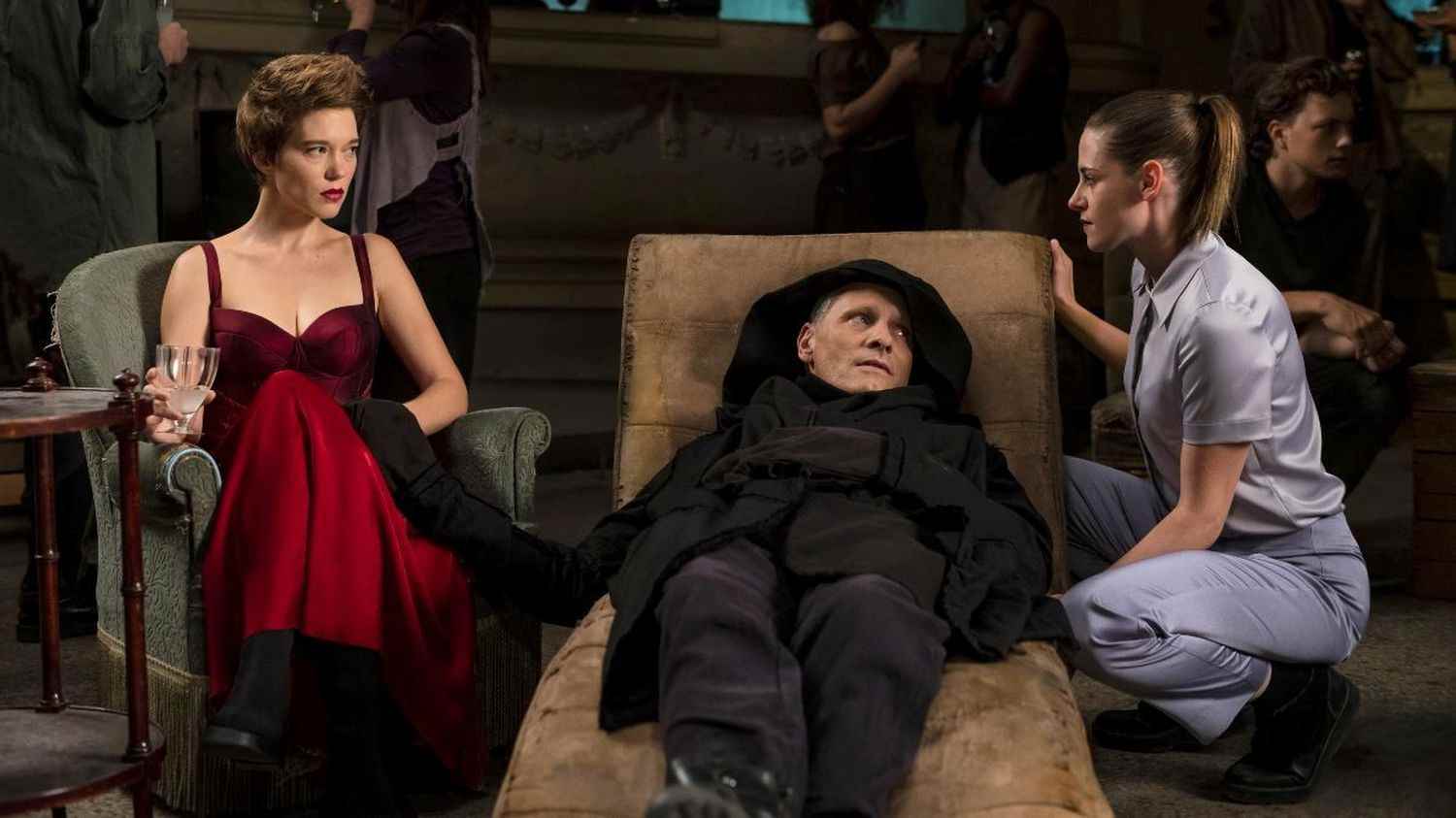Since his first commercial film, David Cronenberg has continued to develop his favorite themes of sex and the organic. The Crimes of the Futurein theaters on Wednesday May 25 in the wake of its world premiere at Cannes on Tuesday, can be seen as the culmination of the Canadian director’s cinematic obsessions.
In a world in decline, individuals develop mutations by spontaneously creating new internal organs. Saul Tenser is one of them. With his partner Caprice, they perform during performances where he has these organic excrescences extracted to make works of art. While the embryonic Office of the National Registry of Organs seeks to showcase it, a competitor has just taken a new step that could prove to be a springboard for the future of humanity.
The Crimes of the Future borrows the title of one of David Cronenberg’s first experimental feature films (Crimes of the Future, 1970). The film is in exact continuity with all his work, but above all with Videodrome (1983), a veritable manifesto of his cinema since Chills (1975), with the theme of the “new flesh” that infects all his films. Attached since his beginnings to visceral and graphic horror, Cronenberg has always advocated the genre as an assumed aesthetic choice. But conscious of being a little disturbing by his sometimes gory images, the director sprinkles his films with an amused second-degree humor.
If Cronenberg sees in William S. Burroughs, JG Ballard and Vladimir Nabokov his major literary sources, Frankenstein by Mary Shelley (1818) is its quintessence. Is this “new flesh” that he declines in his films not the renewed form of the perfect being that the learned demiurge wants to create at the dawn of romanticism, and of which the Gothic novel is then the spearhead? ? A reference that we perceive in the decorations of the Future Crimeslike the building where Saul and Caprice live, which evokes the Frankenstein from 1931 by James Whale. The Gothic novel is also found in the black hood with which the mutant Saul is dressed, a reference to the Monk by MG Lewis (1796).
This neo-Gothic aesthetic is also tinged with “biomechanics”, a concept invented by the painter, illustrator and designer HR Giger, the creator ofAlien. These references, which some would consider backward-looking, are in fact of a modernity that Cronenberg uses to talk about the future. The filmmaker talks about Body Art, quoting the contemporary body artist Orlan, and he questions the research around an “enhanced humanity” that occupies the scientific world. crimes of the future takes the opposite of the title of the work of Jean-Louis Brau (Run, run, comrade, the old world is behind you) by diverting it: run, run, comrade, the future is behind you.

Gender : science fiction
Director: David Cronenberg
Actors: Viggo Mortensen, Léa Seydoux, Kristen Stewart, Scott Speedman
Country : Canada / Greece / France / United Kingdom
Duration : 1h47
Exit : May 25, 2022
Distributer : Metropolitan FilmExport
Summary: While the human species adapts to a synthetic environment, the human body is subject to new transformations and mutations. With the complicity of his partner Caprice, Saul Tenser, a famous performer, stages the metamorphosis of his organs in avant-garde shows. Timlin, an investigator with the Office of the National Organ Registry, follows their practices closely. It is then that a mysterious group appears: they want to take advantage of Saul’s notoriety to reveal to the world the next stage of human evolution…
